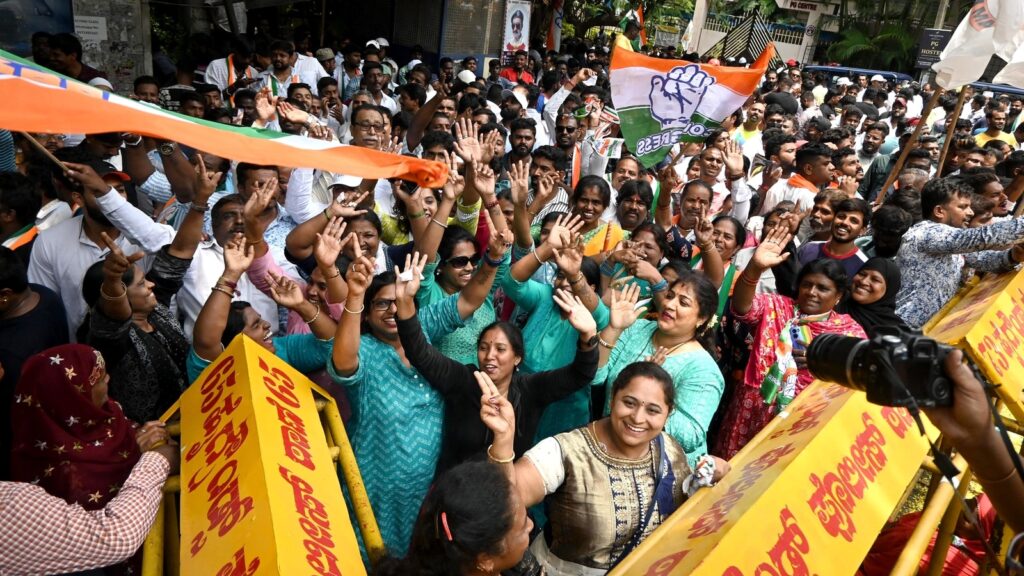The Bharatiya Janata Party (BJP) is not invincible. In the 57 state elections it has contested since May 2014, it has lost 29 (including the 2023 Karnataka polls). That isn’t a sign of invincibility. Nor is the fact that in the 28 where it did form the government after the elections, it had a majority of its own only in 12 and was the single largest party in 18. Sure, the party now has a presence (often a vocal one heavily amplified by social media) in places where it once did not. And sure, it competes hard, throwing everything it has at the elections. But it has lost 29 state elections since May 2014.
As Opposition parties brainstorm after the favourable Karnataka verdict, the question they face is this: Why can’t they defeat the BJP in national polls? To refine that further, they would need to ask: How is it that the BJP wins national elections even in states where it has recently lost assembly polls? For instance, in 2018, the Congress won in Rajasthan, Madhya Pradesh, and Chhattisgarh in state elections; just a few months later, it won just three of the 65 Lok Sabha seats in the three states and the BJP won 62. The lazy explanation is that people vote differently in state and national elections. This is true to some extent – the more local an election, the more tactical voters get – but it isn’t the complete story. A second explanation is Brand Narendra Modi. Again, this helps to an extent – Modi is the tallest political leader in India, and his presence is a big contributor to the conglomerate premium the BJP enjoys at the national level – but it isn’t the complete story either. The complete story has a third, and necessary factor – because parliamentary constituencies are larger than assembly ones (much larger, in fact), and because the BJP competes hard even at the AC level, it has an advantage in national elections, especially if it faces a fragmented Opposition. Together, the three explain why the BJP wins national elections, and what its political rivals need to do to take it on in the 2024 Lok Sabha elections.
But first, what explains the BJP’s loss in a state it considers its stronghold in the South? There were many factors – the reduced stature of BS Yediyurappa; anti-incumbency; the Congress’s success in consolidating the anti-BJP vote (at 43.1%, its vote share was the highest since 1989) – but there is a simple explanation: The BJP’s national leaders, including Modi, who transforms from PM to campaigner-in-chief in poll season, lost to the Congress’s local leaders, Siddaramaiah and, to some extent, DK Shivakumar.
To return to the larger question – what should the BJP’s rivals do to take it on in 2024? And, more importantly, do they have what it takes to do this?
On the first aspect, the Opposition is at a clear disadvantage. Between welfarism and Hindutva, the BJP has a potent narrative, and both details of beneficiaries as well as an effective communication engine to push its ideological agenda. Hindutva keeps the party’s core supporters happy; welfarism eats into the support of other parties; and together, the two appeal to voters looking beyond local concerns. Regional parties, which win state elections against the BJP, stumble when it comes to this; and the BJP’s only pan-Indian rival, the Congress, doesn’t, as yet, have a narrative that’s strong enough (no, “we-stand-against-everything-the-BJP-stands-for” isn’t good enough). On the second, the Opposition parties are, again, at a definite disadvantage. Neither the Congress, nor any other party, has a leader as popular as Modi. The PM is a big part of the conglomerate premium the BJP enjoys. In business lingo, this is the stock-market premium a conglomerate enjoys. It is clear that at the local level, the BJP benefits from the presence of Modi (and also the national achievements of the BJP, something the party touts as a double-engine advantage). In contrast, the Congress, the only national alternative, appears to suffer a conglomerate discount. It will be easier for Opposition parties to work on the first aspect ahead of 2024, than it will be for them to work on the second.
Which is why the third aspect is critical. There are two strands to this – the first is an arrangement between Opposition parties to ensure their votes do not fragment, which is easier said than done; the second is the nuts and bolts of the election machinery, an area where the BJP, at least since 2014, has enjoyed a clear edge, but also one where others are beginning to catch up. Opposition parties may celebrate Karnataka as a rare win over the BJP, but as the data at the beginning of this piece shows, that isn’t really the case, which may also explain why the BJP has been pushing the boundaries of the federal system of governance. The real challenge for them is at the national level – and there, no easy answers are available.

